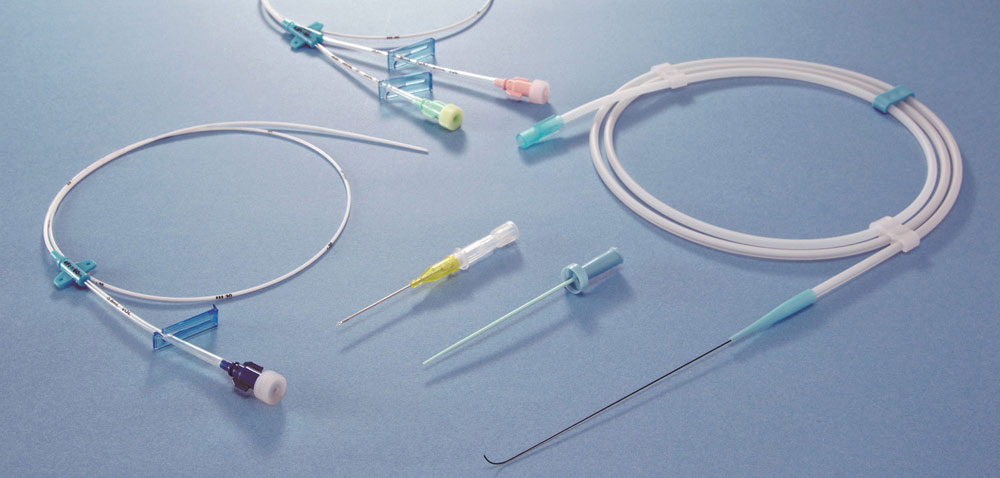Introduction
Catheters are thin tube-like medical devices that are inserted into the body to deliver medications, drain fluids or monitor various body functions. While catheters improve patients’ quality of life, they also pose certain risks if not handled properly. One of the major risks associated with catheters is infection transmission as the insertion site may get contaminated. In response to this issue, researchers have been working on developing antimicrobial catheters coated with antimicrobial agents. This new generation of catheters shows promising results in preventing hospital-acquired infections.
What are the risks of infection with conventional catheters?
Conventional catheters made of materials like silicone or plastic do not have any inherent antimicrobial properties. These catheters become colonized by microbes within a few days of insertion. The longer a catheter remains inserted, the greater the risk of infection. Some key infection risks associated with conventional catheters include:
Skin bacteria entry: The insertion site where the catheter enters the skin is prone to contamination from skin microbes like Staphylococcus and Streptococcus. This serves as the entry point for infections.
Biofilm formation: Microbes attach to the catheter surface and form biofilm layers that are resistant to antimicrobial therapies and the host’s immune response. This makes the catheter a continuous source of infection.
Drug-resistant infections: Healthcare settings house many multidrug-resistant microbial strains. Catheter-associated infections by these superbugs can significantly increase treatment costs and the risk of mortality.
Sepsis: In severe cases, catheter-associated bloodstream infections may lead to life-threatening conditions like sepsis. This increases hospital stay duration and costs.
How do antimicrobial catheters help prevent infections?
Antimicrobial catheters address the infection risks of conventional catheters through their advanced design and coating technologies:
Antimicrobial coating: The catheter surface is coated with compounds that have antimicrobial properties, like chlorhexidine and silver salts. These inhibit microbial attachment and kill microbes.
Prevention of biofilm formation: The frequent release of antimicrobial agents from the coating prevents colonization and discourages biofilm development on the catheter for extended periods.
Activity against broad-spectrum of microbes: The coatings are effective against both gram-positive and gram-negative bacteria as well as fungal strains, reducing the risk of multidrug-resistant infections.
Safety: The coatings are designed for sustained and controlled antibiotic release without systemic absorption, avoiding side effects.
Long-term protection: Antimicrobial coatings maintain their effectiveness for the intended dwell time of the catheter, which could range from a few days to a month depending on the application.
Clinical Effectiveness of Antimicrobial Catheters
Extensive clinical research has demonstrated the ability of antimicrobial catheters to significantly reduce infection rates compared to conventional catheters. Some of the key findings are:
A meta-analysis of 42 clinical studies found that chlorhexidine and silver alloy coated catheters reduced catheter-related bloodstream infections by 56% and 41% respectively.
A large trial on over 2000 ICU patients revealed that chlorhexidine/silver catheters lowered the rates of catheter-associated urinary tract infections by 24% compared to standard catheters.
Several studies proved the cost-effectiveness of these catheters, showing reduction in hospital stay duration and costs outweigh the higher initial catheter costs.
Their effectiveness held true across various hospital settings and patient risk groups like those in ICUs, dialysis units and pediatric/oncology wards.
Wider Acceptance and Future Prospects
Given the substantial evidence, major healthcare Antimicrobial Catheters organizations now recommend the preferential use of antimicrobial catheters to reduce healthcare-associated infections. Many hospitals have adopted antimicrobial catheters as the standard of care. However, there is still room for further research and improvements. Future prospects include:
Development of long-term catheters with antimicrobial activity lasting months could benefit patients requiring indwelling catheters.
Use of combination coatings incorporating two or more antimicrobial agents may provide enhanced protection against emerging drug-resistant pathogens.
Improvements in coating technologies could help reduce costs further, making these devices accessible to all hospitals globally.
In summary, antimicrobial catheters equipped with advanced coating technologies prove highly effective in preventing catheter-associated infections compared to standard catheters. As the threat of antimicrobial resistance continues rising, these novel devices can play a key role in curtailing the spread of hospital-acquired infections. With further innovations, antimicrobial catheters are poised to become the standard of care for catheterized patients around the world.
*Note:
1. Source: Coherent Market Insights, Public sources, Desk research
2. We have leveraged AI tools to mine information and compile it



